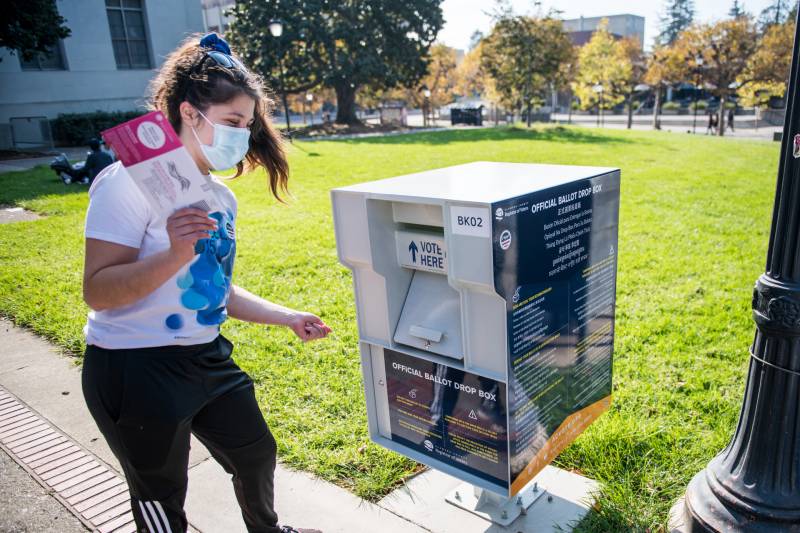But with the pandemic waning in the state, advocates are pointing to the historic turnout and smooth administration of last year’s election in California, in a bid to make those voting changes permanent.
“If your goal is to increase turnout, mailing a ballot to every voter probably accomplishes most of the turnout benefits,” said Eric McGhee, senior fellow with the Public Policy Institute of California, which released a study this week detailing the turnout effects of mail-in voting.
Legislation that would direct counties to send every registered voter a ballot by default in all future elections faces its first hearing in the state Assembly on Thursday.
The push for increased mail-in voting in California stands in contrast to moves by some Republican-controlled state legislatures across the country to restrict access to the ballot. Many proposals were launched in response to false claims of voter fraud in the 2020 election. According to the Brennan Center for Justice, more than 350 restrictive bills have recently been introduced, and five have already been signed into law.
Before 2020, vote-by-mail expansion “wasn’t really a political fight,” said Sylvia Albert, voting and elections program director at the advocacy group Common Cause.
“These provisions have been passed in red, blue and purple states for years,” Albert said. “It’s really just now that we’re seeing a division where states that are improving access are generally Democratic-controlled and states that are attempting to suppress the vote are generally Republican-controlled.”
In February, Gov. Gavin Newsom signed legislation to ensure voters will receive a ballot in the mail by default for all elections held in 2021.
Assembly Bill 37, which will be heard by the Assembly Committee on Elections, would make California the sixth state in the country to enact a permanent universal vote-by-mail policy. If it passes, in-person voting would still remain an option.
The bill would also allow counties to begin processing (but not counting) ballots a month before Election Day, and allow ballots mailed by Election Day to count if they are received by election officials within a week.
“While we see so many efforts in other states to make it harder for people to vote, let’s have California be a real example of what works well,” said Assemblymember Marc Berman, D-Menlo Park, the bill’s author.
Berman wrote the legislation that piloted a universal vote-by-mail system in California in 2020. That bill, which gained the support of nine Republicans in the Legislature, was trumpeted as a way to make voting at home easy and safe during the pandemic.
Now, members of the GOP are likely to argue that long-term shifts toward voting at home are unnecessary as coronavirus cases fall. No Republican lawmaker voted in support of extending the vote-by-mail provisions through the end of the 2021.
Supporters of Berman’s bill are touting mail-in voting as a way to maintain the historic levels of voter participation seen in the 2020 election. Over 80% of registered voters cast a ballot in California, the highest mark since 1976.

